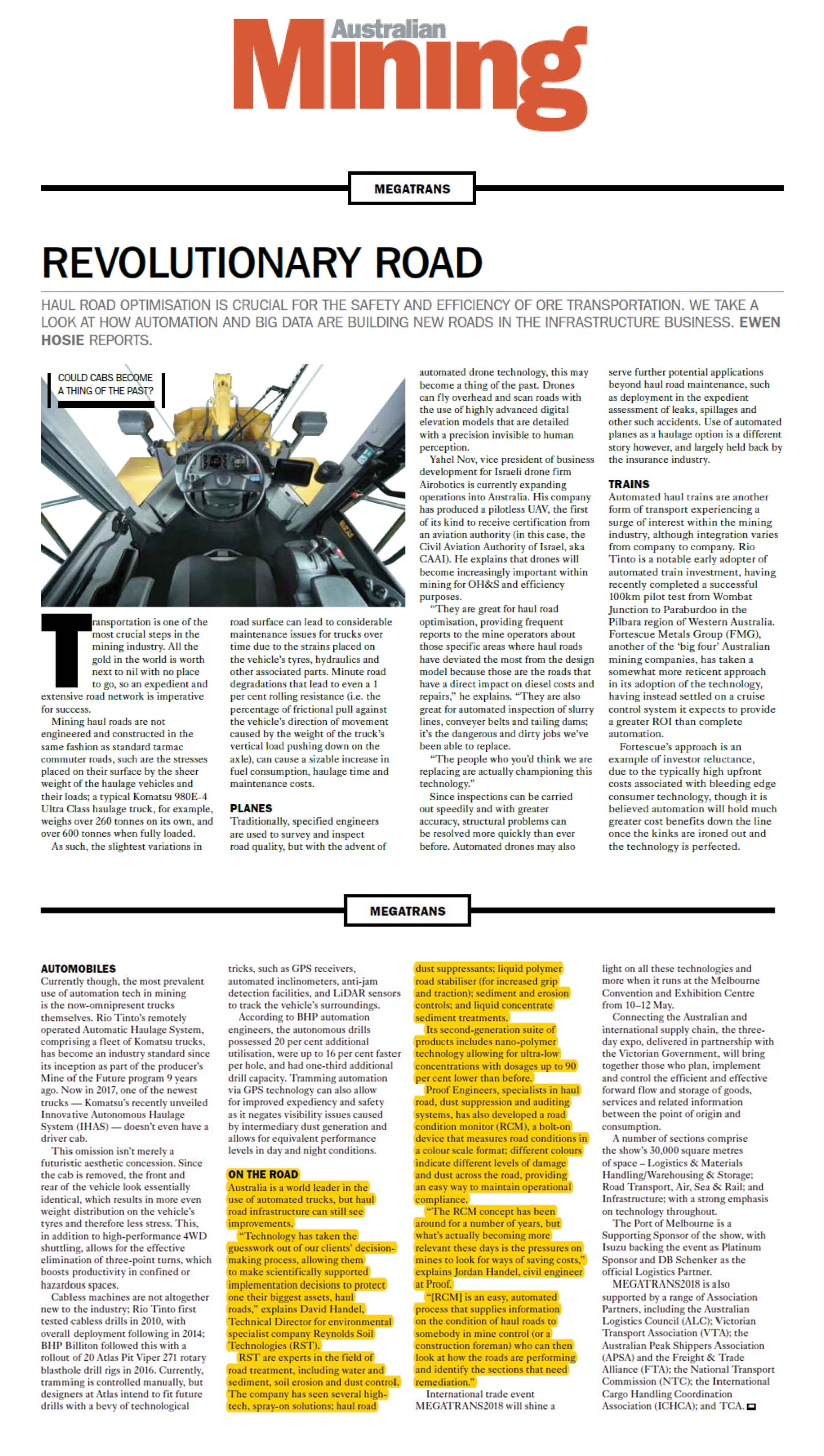Revolutionary Road
20 November 2017 - Dust Control Efficiency, dust monitoring, haul road dust monitoring, haul road improvement, mobile dust monitor, mobile dust monitoring, pit performance, road condition monitoring -
HAUL ROAD OPTIMISATION IS CRUCIAL FOR THE SAFETY AND EFFICIENCY OF ORE TRANSPORTATION. WE TAKE A LOOK AT HOW AUTOMATION AND BIG DATA ARE BUILDING NEW ROADS IN THE INFRASTRUCTURE BUSINESS.
Transportation is one of the most crucial steps in the mining industry. All the gold in the world is worth next to nil with no place to go, so an expedient and extensive road network is imperative for success.
Mining haul roads are not engineered and constructed in the same fashion as standard tarmac commuter roads, such are the stresses placed on their surface by the sheer weight of the haulage vehicles and their loads; a typical Komatsu 980E-4 Ultra Class haulage truck, for example, weighs over 260 tonnes on its own, and over 600 tonnes when fully loaded.
As such, the slightest variations in road surface can lead to considerable maintenance issues for trucks over time due to the strains placed on the vehicle’s tyres, hydraulics and other associated parts. Minute road degradations that lead to even a 1 per cent rolling resistance (i.e. the percentage of frictional pull against the vehicle’s direction of movement caused by the weight of the truck’s vertical load pushing down on the axle), can cause a sizable increase in fuel consumption, haulage time and maintenance costs.
ON THE ROAD
Australia is a world leader in the use of automated trucks, but haul road infrastructure can still see improvements.
“Technology has taken the guesswork out of our clients’ decision-making process, allowing them to make scientifically supported implementation decisions to protect one of their biggest assets, haul roads,” explains David Handel, Technical Director for environmental specialist company Reynolds Soil Technologies (RST).
RST are experts in the field of road treatment, including water and sediment, soil erosion and dust control. The company has seen several high-tech, spray-on solutions; haul road dust suppressants; liquid polymer road stabiliser (for increased grip and traction); sediment and erosion controls; and liquid concentrate sediment treatments.
Its second-generation suite of products includes nano-polymer technology allowing for ultra-low concentrations with dosages up to 90 per cent lower than before.
Proof Engineers, specialists in haul road, dust suppression and auditing systems, has also developed a road condition monitor (RCM), a bolt-on device that measures road conditions in a colour scale format; different colours indicate different levels of damage and dust across the road, providing an easy way to maintain operational compliance.
“The RCM concept has been around for a number of years, but what’s actually becoming more relevant these days is the pressures on mines to look for ways of saving costs,” explains Jordan Handel, civil engineer at Proof.
“[RCM] is an easy, automated process that supplies information on the condition of haul roads to somebody in mine control (or a construction foreman) who can then look at how the roads are performing and identify the sections that need remediation.”


